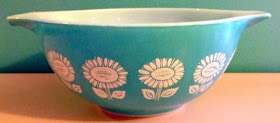As
the long, slow death of the fractious, former bohemian enclave known as
the Chelsea Hotel continues, Suzanne Lipschutz isn’t mourning much.
She’s moving on.
One
recent snowy morning, a reporter picked her way through the
construction that has been ongoing for years at the hotel to the
third-floor apartment that has been Ms. Lipschutz’s home for more than
two decades.
Not
that it looked that way. Chock-a-block with Persian furniture, Austrian
pottery, Tibetan nesting tables, swags of tasseled damask and brocade,
Tiffany lamps and pierced brass lamps and lamps made from armadillos
(yes, armadillos) and more antique wallpaper, wainscoting and paneling
than you’d think a two-room apartment could hold, the place appeared to
have been put together back in the 1880s, around the time the Chelsea
was built.
You
can see why Ms. Lipschutz — whose store,
Secondhand Rose, famous for
its vintage wallpapers and once as much of a Manhattan icon as the
Chelsea — would be reluctant, even fearful, to dismantle her distinctive
habitat. She is among the rent-stabilized tenants, she said, whom the
new owner has asked to relocate to another floor.
Before
moving to the Chelsea, Ms. Lipschutz, now 73, lived all over the West
Village, raising her son, Luke Joerger, in a series of lofts and
railroad apartments that she won and lost in typical old-Manhattan
fashion. Buildings burned down, rents tripled, but she wallpapered them
all, sometimes even papering the floors and the furniture. Her
store, which she opened in 1965 on Hudson Street with a busted Tiffany
magnolia lamp she found in a junkie’s apartment and 19th-century
furniture harvested from the street, ranged around the Village in
various locations for two decades before settling in SoHo, then TriBeCa,
then lower Fifth Avenue, riding the waves of boom and bust and an
appetite, perhaps now waning, for period wallpapers. These days, vintage
paper is much harder to find, she said, and her own appetite to do so
is lessening: “I’d like to sell out my stock in the next few years. I’m
not having as much fun anymore.”
In
the ’70s, John Lennon and Yoko Ono were clients. So was Paul Simon,
another Dakota resident, and Ms. Lipschutz’s neighbor Julian Schnabel,
who liked to make paintings on her vintage linoleum, and with whom she
bartered for work. She tried to barter with Frank Stella, too. Not that
she knew who he was the day he wandered in, when she offered him
furniture for his paint-splattered shoes.
“They
looked like Jackson Pollock had made them,” she said. “I said: ‘Who are
you? If you give me your shoes, I’ll give you anything you want.’ ”
William
Wegman photographed her with Fay Ray and her daughter, Batty, atop an
assemblage of gilded furniture. Frank Serpico liked hanging out in her
Hudson Street store; when a pair of local thugs stole some Victorian
quilts, he helped her track them down, she said, which wasn’t difficult
because the burglars had made the quilts into pants and were wearing
them around the West Village. For a few seasons in the 1980s,
photographs of the store were part of the opening montage for Saturday Night Live. “Those
were my salad days,” said Ms. Lipschutz, whose deep, husky voice is as
ornate as one of her Victorian wallpapers. “People said it was the most
beautiful store in the world. I thought it would never end.”
When
Luke went to college, she said, she wanted to downsize. The Chelsea,
where many of her friends lived, was a natural ecosystem for someone
with her florid tastes.
“Stanley
and I fell in love with each other,” she said of Stanley Bard, the
hotel’s longtime manager and gatekeeper, who was ousted in 2007. “And
that was it.”
He
offered Ms. Lipschutz a one-bedroom apartment for $1,575. She stripped
its layers of grubby linen paint and rubbed wax into the rich brown
paneling and door frames until they glowed. She collaged the walls with
period wallpaper and borders, and wainscoting she salvaged from a
Brooklyn townhouse. She found a stained-glass door from the Aesthetic
Movement at ABC Carpet & Home, and took it apart to make transom
windows.

In
the tiny kitchen, she added a 1930s kitchen cabinet, along with green
medical cabinets from the 1940s and a mosaic of glass tiles that for
years was a work in progress. When her son married, she persuaded him
and his wife to move into the building, too, which they did for a few
years until their children were school-age, living in an apartment on
the ninth floor.
“We
had so much fun,” she said. “If you were sad about something, you could
get in your nightgown and go to someone’s apartment and cry. If someone
was cooking, they’d share their food. It was the most wonderful place
to live. You were never alone.” Now, Ms. Lipschutz is one of only two tenants on her floor, she said: “Those who didn’t have the strength to fight have gone.”

















































